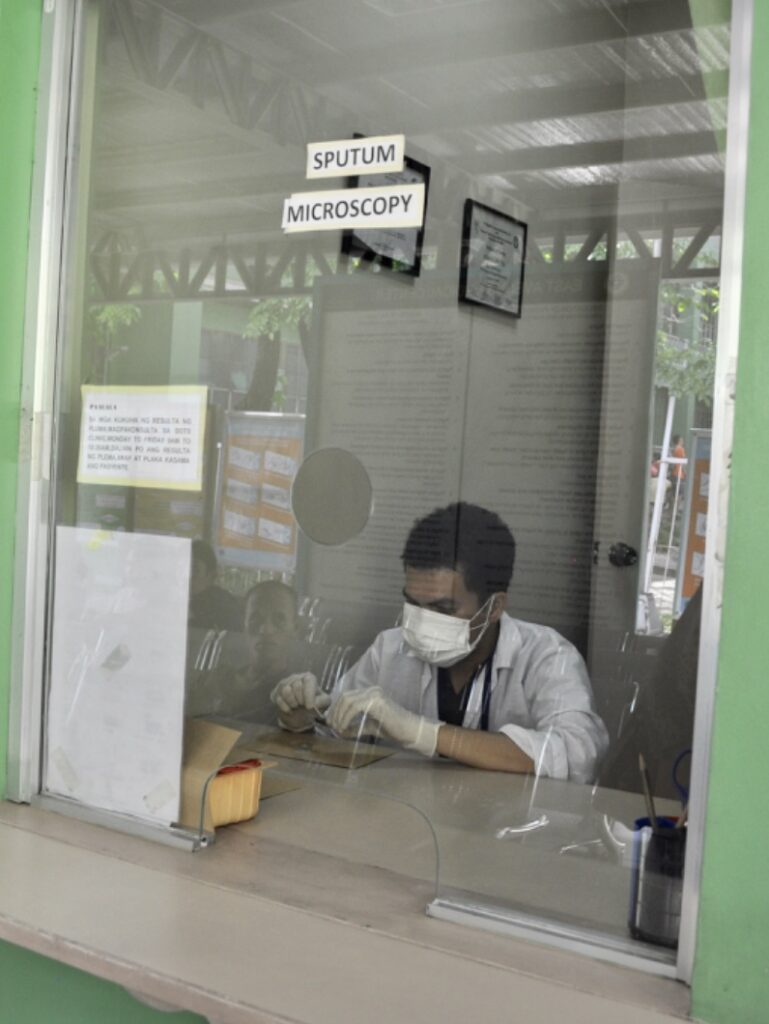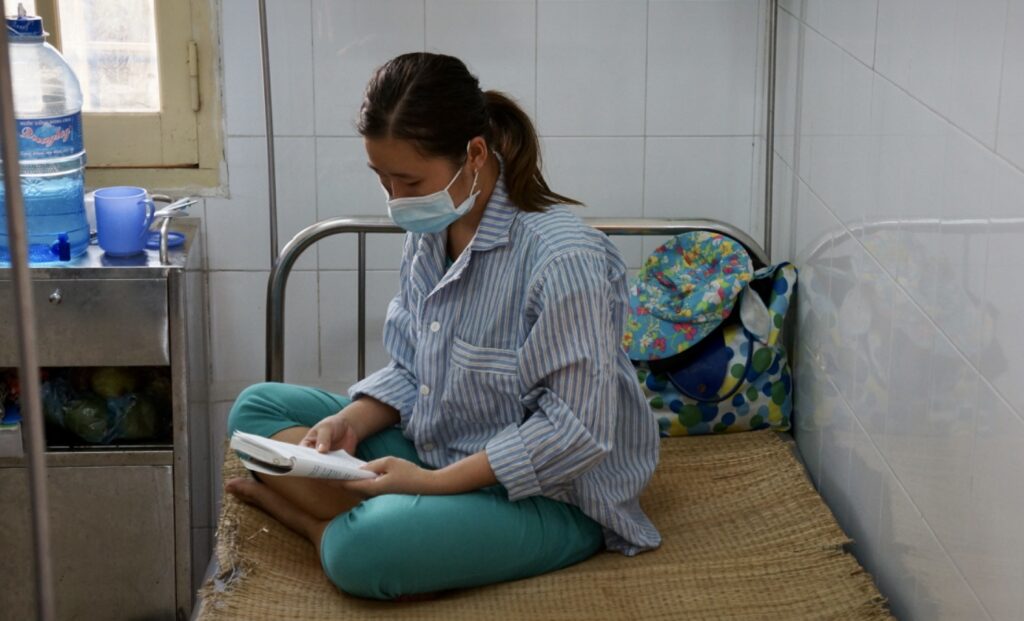By Henrylito D. Tacio
Photos courtesy of WHO
Unlike the coronavirus disease 2019 (COVID-19), tuberculosis (TB) is curable. Although no one gets panic if a member of the family is infected with the bacteria that causes it, TB is a grim reaper: it kills one person every 20 seconds.
Despite advanced knowledge in science and the recent discovery of sophisticated drug regimes, the disease has continued its deadly progression. “Tuberculosis is perhaps the greatest killer of all time,” observes Dr. Frank Ryan, author of Tuberculosis: The Greatest Story Never Told.
An estimated 10 million people fell ill with TB worldwide in 2019: 5.6 million men, 3.2 million women, and 1.2 million children. Of the total, 1.4 million died from TB, according to the World Health Organization (WHO).
In the Philippines, about one million people have active TB disease. “This is the third highest prevalence rate in the world, after South Africa and Lesotho,” the WHO regional office states. “Every day, more than 70 people lose their lives to TB needlessly.”
There is no end in sight. “Tuberculosis rose slowly, silently, seeping into the homes of millions, like an ageless miasma,” Dr. Ryan writes. “Once arrived, TB stayed, a stealthy predator.”
The tenacious TB bacillus – Mycobacterium tuberculosis – has preyed on people since antiquity. TB-induced skeletal deformities point to the disease’s existence as early as 8000 BC. Unmistakable signs of tubercular bone decay were found in the skeletons of Egyptian mummies as long ago as 2400 BC.

Preparing sputum sample for microscopic examination (WHO, HM Dias) 
TB patient (WHO, E. Eraly)
“Year after year, century after century, it tightened its relentless grip, worsening with wars and famines that reduced people’s resistance, infecting virtually everyone but inexplicably sparing some while destroying others,” wrote Dr. Frank in his book.
Like the COVID-19 virus, TB is spread from person to person through the air. “When people with lung TB cough, sneeze or spit, they propel the TB germs into the air,” the WHO explains. “A person needs to inhale only a few of these germs to become infected.”
A less common route of transmission is through the skin. Pathologists and laboratory technicians who handle TB specimens may contract the disease through skin wounds. TB has also been reported in people who have received tattoos and people who have been circumcised. A person may become infected with TB bacteria and not develop the disease. His or her immune system may destroy the bacteria completely.
“People infected with TB bacteria have a 5-15% lifetime risk of falling ill with TB,” the WHO says. “Those with compromised immune systems, such as people living with HIV, malnutrition or diabetes, or people who use tobacco, have a higher risk of falling ill.”
The four most familiar signs of TB, according to health experts, are chronic cough, mild fever in the afternoon and sweating at night, chest and back pain, and progressive weight loss. In more serious or advanced cases, the symptoms are spitting blood, pale and waxy skin, and a hoarse voice.
The disease can occur in two stages: primary and secondary. “In primary TB,” explains Maria Luisa Padilla in Encarta Encyclopedia, “a person has become infected with the TB bacteria but often is not aware of it, since this stage of the disease does not produce noticeable symptoms. Macrophages, immune cells that detect and destroy foreign matter, ingest the TB bacteria and transport them to the lymph nodes where they may be destroyed or inhibited.”
TB is not contagious in the early stage. “About three weeks after initial infection,” Padilla continues, “bacteria may be inhibited, destroyed, or allowed to multiply. If the bacteria multiply, active primary TB will develop.”
Symptoms of carriers include coughing, night sweats, weight loss, and fever. A chest X-ray may show shadows or fluid collection between the lung and its lining.
If the bacteria are inhibited rather than destroyed, the immune cells form a mass known as granuloma or tubercle. In effect, the immune cells form a wall around inactive bacteria.
“As long as the immune system remains strong, the TB bacteria remain walled off and inactive,” Padilla maintains. “The tubercle gradually collects calcium deposits to form what is known as a Ghon focus. These initial tubercles in the lung usually heal, leaving permanent scars that appear as shadows in chest X-rays.”
At the primary stage of TB, the disease does not progress, but bacteria may remain dormant in the body for many years. If the immune system becomes weakened, the tubercle opens, releasing the bacteria, and the infection may develop into an active disease, known as secondary TB.
In secondary TB, the formerly dormant bacteria multiply and destroy tissue in the lungs. They also may spread to the rest of the body via the bloodstream. Fluid or air may collect between the lungs and the lining of the lungs, while tubercles continue to develop in the lung, progressively destroying lung tissue. Coughing of blood or phlegm may occur. At this secondary stage, carriers of TB can infect others.
In the past, TB was considered the world’s deadliest disease. Then, in 1944, 21-year-old “Patricia” with progressive, far-advanced pulmonary TB received the first injection of streptomycin. She improved dramatically during the ensuing five months and was discharged in 1947. She was evaluated in 1954 and found to be healthy and the happy mother of three children.
“This injection began the age of modern anti-TB treatment and led – until recently – to dramatic reductions in TB in industrialized countries,” the WHO says.
Other anti-TB drugs are thioacetazone (first introduced in 1946), isoniazid and pyrazinamide (both first tried in 1952), and ethambutol (used for the first time in 1961). The most recent one, rifampicin, was released in 1966.
The success of drug therapy and the declining rates of disease incidence in the middle part of the 19th century instilled a sense of confidence in public health officials that TB could be conquered.
But like a phoenix that rises from ashes, TB has staged a comeback – in a deadlier and more complicated form.
“The current TB epidemic is expected to grow worse, especially in developing countries, because of the evolution of MDR (multidrug-resistant) strains and the emergence of AIDS (Acquired Immune Deficiency Syndrome), which comprises human immune system and makes them more susceptible to infectious diseases,” notes Anne Platt of the Washington-based Worldwatch Institute.
In the Philippines, many TB patients develop MDR, which is more expensive and difficult to treat.
The MDR TB is any strain of the bacteria that is resistant to anti-TB drugs. It generally develops through the improper use of TB medication. People being treated for TB normally must take a mixture of drugs over an extended period of time. If they don’t complete their full course of medication, the strongest bacilli surviving in the lungs are given the opportunity to reproduce. Those bacilli will likely be drug-resistant and, if the patient continues to suffer from active TB, can be spread by coughing to other people.
Poverty has been cited as the major reason for the resurgence of TB. “Overcrowded, impoverished dwellings are its breeding ground, and TB thrives on immune systems weakened by other chronic infections and by malnutrition,” said The Stop TB Initiative 2000 Report.
“Even before the cause of TB was discovered in 1822, thus paving the way to effective drug treatments, the rates of disease were falling in many developed countries because of an improvement in peoples’ standard of living,” the report added.
A significant cause of the dramatic rise in TB cases from the mid-1980s onwards is the human immunodeficiency virus (HIV), the microorganism that causes AIDS. Today, TB is the single biggest killer of people infected with HIV. “HIV and TB form a lethal combination, each speeding the other’s progress,” the WHO says.
HIV weakens the immune system. Health experts say someone who is HIV-positive and infected with TB is 30 times more likely to become sick with TB than someone infected with TB who is HIV-negative.
“There is nothing a person can do to not get TB,” laments the WHO. “You can change your behavior to lower the risk of AIDS, but you cannot stop breathing.”
The international community wants to end TB from this planet by 2030. After all, TB is preventable and curable. But in the Philippines, the number of people with TB continues to increase every year.
“Ending TB requires concerted action by all sectors and all care providers,” the WHO points out. “Everyone has a role to pay in ending TB – individuals, communities, businesses, governments, societies. Everyone must join the race to end TB by 2030.”
Meanwhile, the clock is ticking. It’s time to ensure that no one dies of TB anymore!

